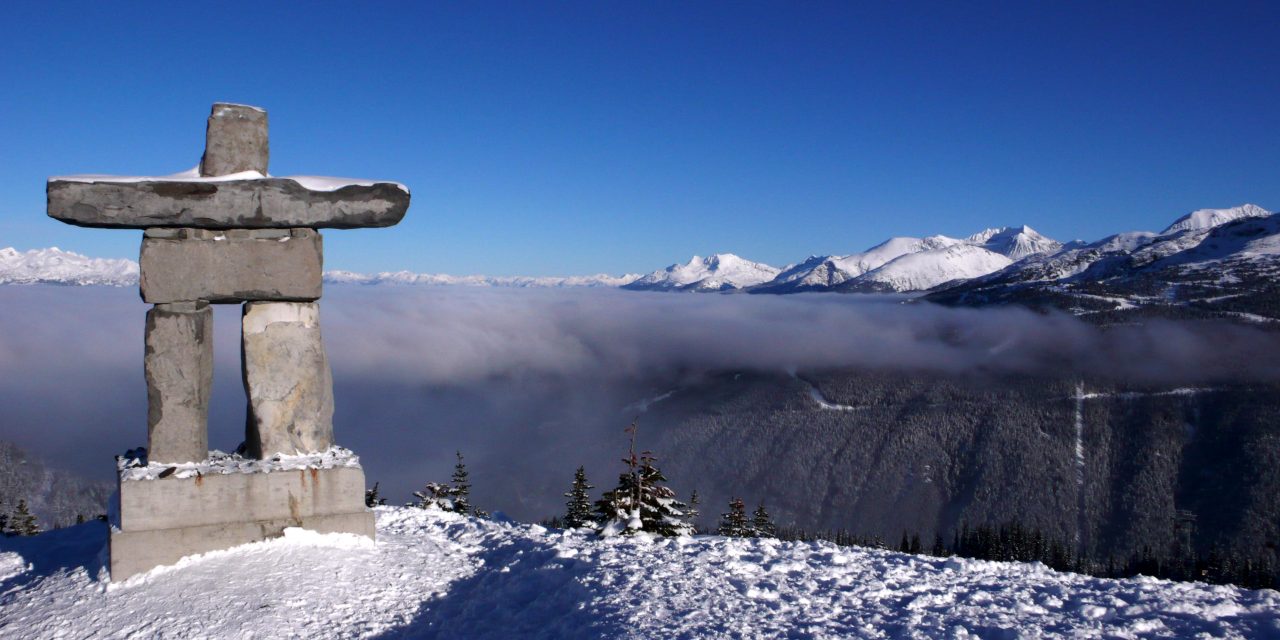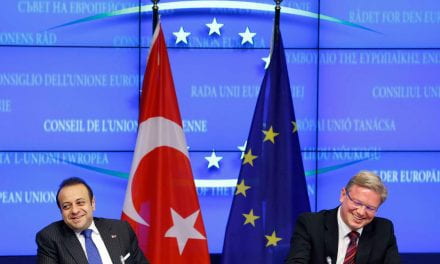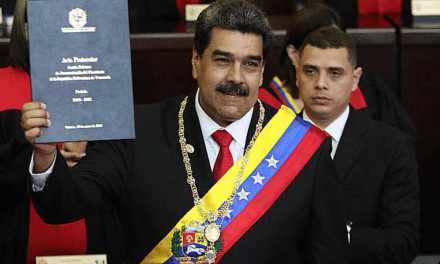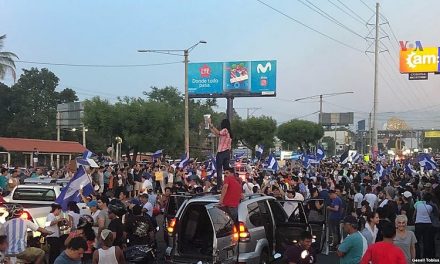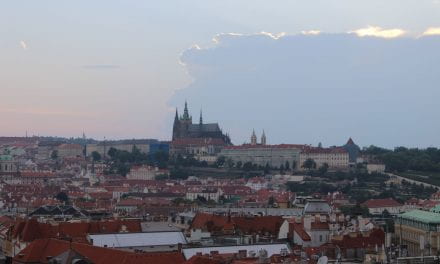By: Mackenzie Rice*
At the United Nations General Assembly in September 2017, Canadian Prime Minister Justin Trudeau delivered a powerful and reflective speech covering a breadth of issues currently facing the Canadian public. In the most emotionally charged part of his speech, Prime Minister Trudeau detailed an honest introspection into the atrocities that Canadian First Nations, Metis, and Inuit populations were subjected to over the course of the nation’s history, and the gross inequalities that persist as a result. Trudeau candidly stated, “For indigenous peoples in Canada, the experience was mostly one of humiliation, neglect, and abuse.”[1] These experiences included a devastating residential schooling system which tore apart indigenous families and served to further the federal government’s assimilationist agenda. Despite the horrible historic relationship between Canada and its indigenous populations, Prime Minister Trudeau signaled his optimism and confidence that Canada now has an “opportunity to deliver true, meaningful, and lasting reconciliation between Canada and First Nations, the Metis Nation, and Inuit peoples.”[2] Often, these emotional political statements of apology and recognition of historical wrongs are doubted for their ability to engender true change, healing, or forgiveness; however, they are an essential step in the process of reconciliation. Without public recognition of historical injustices perpetrated by the state and acknowledgement of their present-day effects on indigenous populations, states cannot fully develop as progressive, liberal democracies that proclaim equality for all members of their population.
In Canada, indigenous peoples were subjected to forced relocation as well as social, economic, and political marginalization. The Canadian government destroyed family units, forced indigenous children into residential schools, banned languages, restricted the peoples’ freedom of movement, and denied them access and participation in the political system.[3] In 2015, a report by the Truth and Reconciliation Commission of Canada deemed Canada to be guilty of cultural genocide of its indigenous populations, a crime involving the systematic destruction of institutions, structures, and practices that allow a group to exist as a distinct and cohesive social, cultural, religious, or racial entity.[4] Canada’s steps towards reconciliation began in the 1980s with a series of apologies issued by churches and community groups that historically endorsed the residential schooling system, and were continued in June 2008 with a series of national apologies by every parliamentary leader, and an apology on behalf of Canada, made by the prime minister.[5] However, as Prime Minister Trudeau noted in his speech before the United Nations General Assembly, poverty and unequal living conditions persist amongst indigenous peoples and communities in Canada.[6] For example, some indigenous communities still lack access to safe water and quality education, and indigenous populations experience disproportionate levels of mental illness, suicide, and domestic violence.[7] The report by the Truth and Reconciliation Commission of Canada outlines a series of “calls to action” that include a broad range of social, legal, political, and educational recommendations. Some of the highlights from the exhaustive list of calls to action include amending national historical sites and monuments and revising national school curriculums to incorporate a more comprehensive and honest account of the history of indigenous peoples in Canada. The report also prompts Canadian leaders to adhere to the principles outlined by the United Nations Declaration of the Rights of Indigenous Peoples in the hope that Canada will be able to achieve its goal of redress and reconciliation with indigenous populations.[8]
Unfortunately, Canada’s horrific historical treatment of indigenous populations and its struggle to approach reconciliation is not an outlier in the global arena. Other countries such as Australia also have tragic histories with regard to the treatment of indigenous populations and have begun to take steps towards recognizing and hopefully rectifying the crimes that were committed against these populations. In Australia, Aboriginal and Torres Strait Islander peoples faced familial separations and the widespread enforcement of assimilationist policies, particularly during the 1950s and 1960s. This resulted in what is known as the Stolen Generation, due to the high number of Aboriginal children that were taken from their families during this time and forced into adoption by white families.[9] To begin reconciliation, on May 26th, 1988 the Australian government established the annual National Sorry Day, on which there were 24,763 apologies made for the forced removal of aboriginal children from their communities in Australia.[10] Now renamed the National Day of Healing, the annual tradition continues as a venue for Australians, Aboriginal Australians, and Torres Strait Islander peoples to reflect on their shared history and the injustices that took place. Furthermore, in Australian public spaces, before the commencement of a meeting, event, or speech, the original custodians and traditional owners of the land thanked and acknowledged as a form of societal and customary recognition of Australia’s collective history.
However, the road to reconciliation has been slow and difficult for both Canada and Australia. In Canada, indigenous people face systemic poverty resulting from barriers to education and employment.[11] Similarly, the indigenous populations in Australia are subject to institutionalized impoverishment resulting in higher rates of mental illness, suicide and alcoholism, which can be attributed to their history of being systematically denied land, property and resources.[12] Furthermore, when the United Nations Declaration in the Rights of Indigenous Peoples (UNDRIP) was passed in the UN General Assembly in 2007, it received 144 votes in favor and only 4 votes opposed, with the negative votes coming from Australia, Canada, the United States of America, and New Zealand. Each of the four states is known to have a particularly egregious historical relationships with their respective indigenous populations; making their opposition to UNDRIP a bold and controversial statement to the international community about the reluctance of these states to embrace international efforts for recognition and reconciliation.[13] In the decade that has passed since, each of these four states have reversed their position and now stand in favor of the Declaration, marking a meaningful step of political commitment to reconciliation and redress for indigenous populations. The transition of these states from opposition to support of UNDRIP demonstrates the slow-moving process of reconciliation.
Why do progressive, developed countries such as Canada and Australia struggle to achieve equality and reconciliation with indigenous populations? The answer is embedded in intricate processes of cultural socialization that essentially boil down to national identity and denial. No one likes to think of their country as one that would endorse or engage in horrific practices that served to destroy cultures and communities. As liberal democracies that stand for the protection of human rights on the international stage, it requires an immense amount of candor, honesty, and integrity for Canada and Australia to admit to the true history of the relationship between indigenous populations and the state. It is difficult for progressive nations that want to be characterized as champions of equality and freedom to own up to the widespread persecution of indigenous populations within their own borders. Instead, it is easy for states to avoid these difficult conversations, and take it upon themselves to re-write their history in a way that serves the ideals of their desired national identity through the channel of public education.
Rather than being taught the full truth about the historical treatment of native populations and the inequality and discrimination that persists, public and private school students are more often than not taught a glossed-over, censored version of the history of their country’s relationship with indigenous populations.[14] These broken historical accounts and false educations are extremely dangerous, because they allow societies to forget the crimes of past generations and their present-day consequences. Gradually, over time, as states fail to educate their youth about unjust policies imposed on indigenous populations, and the pervasive inequalities that they produced, those histories begin to seem irrelevant to the development of national identity. Eventually, these practices make it increasingly harder to facilitate a dialogue that will actually serve to break down barriers that stand in the way of reconciliation and recognize the historical significance of the issue. At the Traditional Knowledge Keepers forum in Canada, Chief Ian Campbell said, “Our history is your history, as Canada… until Canada accepts that… this society will never flourish to its full potential.”[15] This statement has a broader applicability to all countries that are working towards building better relationships with their indigenous communities and approaching options of redress.
Reconciliation takes time. The value of symbolism and education cannot be understated in this process, because they develop cultural recognition and public acceptance of past atrocities as a part of national history. For this reason, national apologies, speeches, endorsement of international declarations, and commission reports are an important and promising step. The Truth and Reconciliation Commission of Canada recognized that “Heritage sites, monuments, and plaques that celebrate Canada’s past are common, but commemorating those aspects of our national history that reveal cultural genocide, human rights violations, racism, and injustice are more problematic.”[16] Across the world, societies dedicate a great amount of time and energy to erecting memorials to celebrate the positive parts of our history; the people who changed lives, fought valiantly, and discovered great things, yet are often unable to find constructive, public ways to acknowledge their wrongs. However, it is vital that we find ways to do this, so that we may prevent past injustices from recurring, and move forward together. For countries such as Canada and Australia that are attempting to find legal, social, cultural, and political paths to redress for their indigenous populations, reflection and acceptance of shared histories is crucial. From these symbolic and educational steps, it is possible to develop legislation and welfare programs that work to support and promote the development of indigenous cultures while giving them greater representation in the political system and equal opportunities. Countries such as Canada and Australia have a long journey ahead towards achieving meaningful reconciliation and building better relationships with indigenous peoples, however, the steps that they have taken towards national and international recognition of the issue is a promising beginning.
[1] “Trudeau talks of Indigenous struggles in Canada in UN address,” YouTube video, 3:00, posted by “The Canadian Press”, September 22, 2017, https://www.youtube.com/watch?v=E9m_fq9HLVM.
[2] Ibid.
[3] Truth and Reconciliation Commission of Canada, “Honoring the Truth, Reconciling for the Future,” 1-2, accessed October 15, 2017, http://www.trc.ca/websites/trcinstitution/File/2015/Findings/Exec_Summary_2015_05_31_web_o.pdf.
[4] Ibid.
[5] Ibid., 237.
[6] “Trudeau talks of Indigenous struggles in Canada in UN address,” YouTube video, 3:00, posted by “The Canadian Press”, September 22, 2017, https://www.youtube.com/watch?v=E9m_fq9HLVM.
[7] Ibid.
[8] Ibid., 254.
[9] “Sorry Day and the Stolen Generations,” The Australian Governemnt, accessed October 12, 2017, http://www.australia.gov.au/about-australia/australian-story/sorry-day-stolen-generations.
[10] Ibid.
[11] “Aboriginal Issues,” The Centre for Social Justice, accessed October 12, 2017, http://www.socialjustice.org/index.php?page=aboriginal-issues.
[12] “The Gap: Indigenous Disadvantage in Australia,” Australians Together, accessed October 15, 2017, http://www.australianstogether.org.au/stories/detail/the-gap-indigenous-disadvantage-in-australia.
[13] Indigenous Peoples Division for Social Policy and Development, “United Nations Declaration on the Rights of Indigenous Peoples,” United Nations, accessed October 19, 2017, https://www.un.org/development/desa/indigenouspeoples/declaration-on-the-rights-of-indigenous-peoples.html.
[14] Chelsea Vowel, “Debunking the myth that Canadian schools teach enough about indigenous peoples,” CBC, accessed October 19, 2017, http://www.cbc.ca/news/indigenous/debunking-myth-canadian-schools-teach-indigenous-peoples-1.3376800.
[15] Truth and Reconciliation Commission of Canada, “Honoring the Truth, Reconciling for the Future,” 237, accessed October 19, 2017, http://www.trc.ca/websites/trcinstitution/File/2015/Findings/Exec_Summary_2015_05_31_web_o.pdf.
[16] Truth and Reconciliation Commission of Canada, “Honoring the Truth, Reconciling for the Future,” 337, accessed January 18, 2018, http://www.trc.ca/websites/trcinstitution/File/2015/Findings/Exec_Summary_2015_05_31_web_o.pdf.
*Disclaimer: The content contained in the following material is the sole ownership of the author and does not reflect the views of the Towson University Journal of International Affairs nor Towson University in any respect whatsoever.

